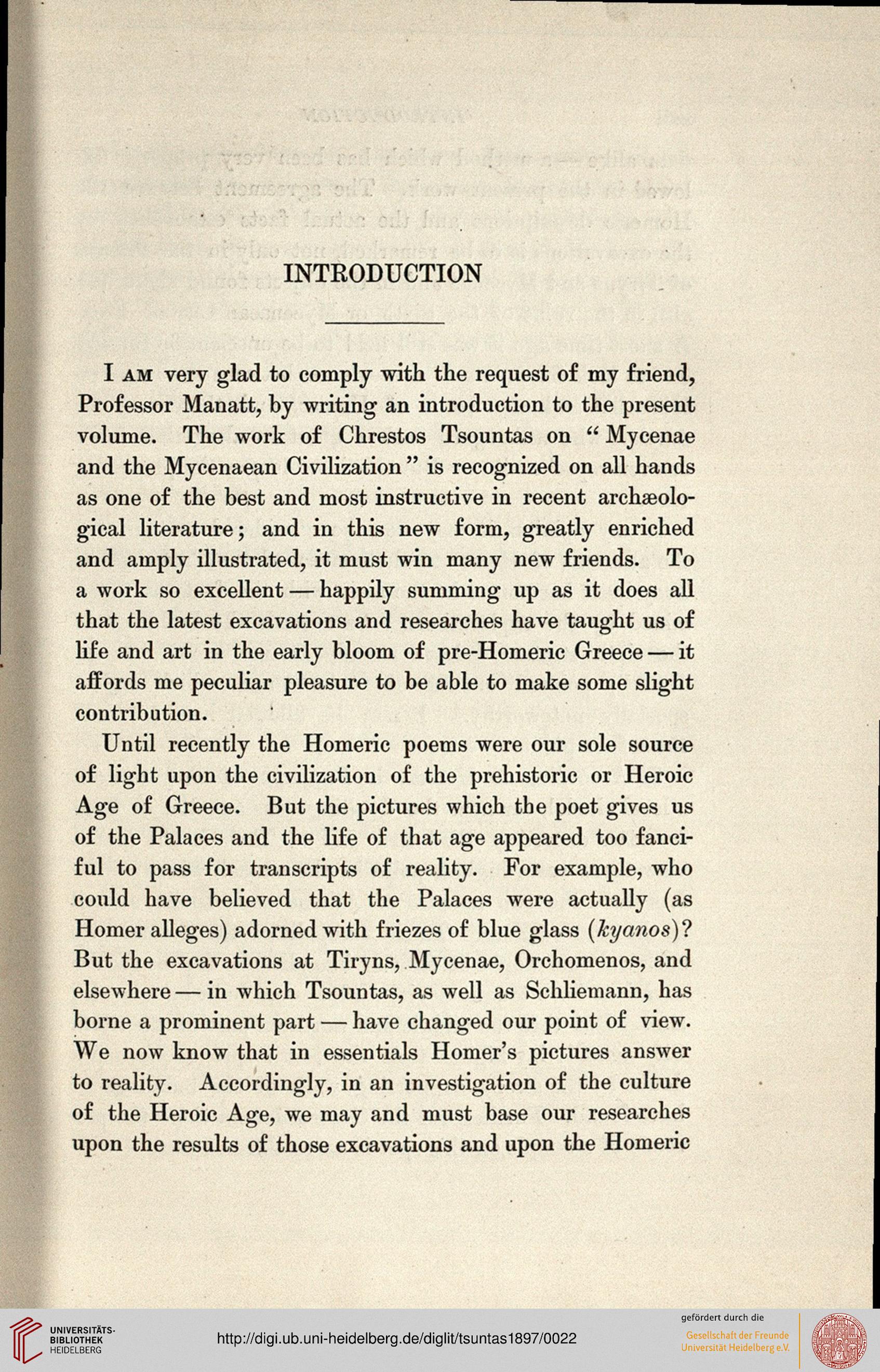INTRODUCTION
I am very glad to comply "with the request of my friend,
Professor Manatt, by writing- an introduction to the present
volume. The work of Chrestos Tsountas on " Mycenae
and the Mycenaean Civilization " is recognized on all hands
as one of the best and most instructive in recent archaeolo-
gical literature; and in this new form, greatly enriched
and amply illustrated, it must win many new friends. To
a work so excellent — happily summing up as it does all
that the latest excavations and researches have taught us of
life and art in the early bloom of pre-Homeric Greece — it
affords me peculiar pleasure to be able to make some slight
contribution.
Until recently the Homeric poems were our sole source
of light upon the civilization of the prehistoric or Heroic
Age of Greece. But the pictures which the poet gives us
of the Palaces and the life of that age appeared too fanci-
ful to pass for transcripts of reality. For example, who
could have believed that the Palaces were actually (as
Homer alleges) adorned with friezes of blue glass (kyanos)?
But the excavations at Tiryns, Mycenae, Orchomenos, and
elsewhere—in which Tsountas, as well as Schliemann, has
borne a prominent part — have changed our point of view.
We now know that in essentials Homer's pictures answer
to reality. Accordingly, in an investigation of the culture
of the Heroic Age, we may and must base our researches
upon the results of those excavations and upon the Homeric
I am very glad to comply "with the request of my friend,
Professor Manatt, by writing- an introduction to the present
volume. The work of Chrestos Tsountas on " Mycenae
and the Mycenaean Civilization " is recognized on all hands
as one of the best and most instructive in recent archaeolo-
gical literature; and in this new form, greatly enriched
and amply illustrated, it must win many new friends. To
a work so excellent — happily summing up as it does all
that the latest excavations and researches have taught us of
life and art in the early bloom of pre-Homeric Greece — it
affords me peculiar pleasure to be able to make some slight
contribution.
Until recently the Homeric poems were our sole source
of light upon the civilization of the prehistoric or Heroic
Age of Greece. But the pictures which the poet gives us
of the Palaces and the life of that age appeared too fanci-
ful to pass for transcripts of reality. For example, who
could have believed that the Palaces were actually (as
Homer alleges) adorned with friezes of blue glass (kyanos)?
But the excavations at Tiryns, Mycenae, Orchomenos, and
elsewhere—in which Tsountas, as well as Schliemann, has
borne a prominent part — have changed our point of view.
We now know that in essentials Homer's pictures answer
to reality. Accordingly, in an investigation of the culture
of the Heroic Age, we may and must base our researches
upon the results of those excavations and upon the Homeric




